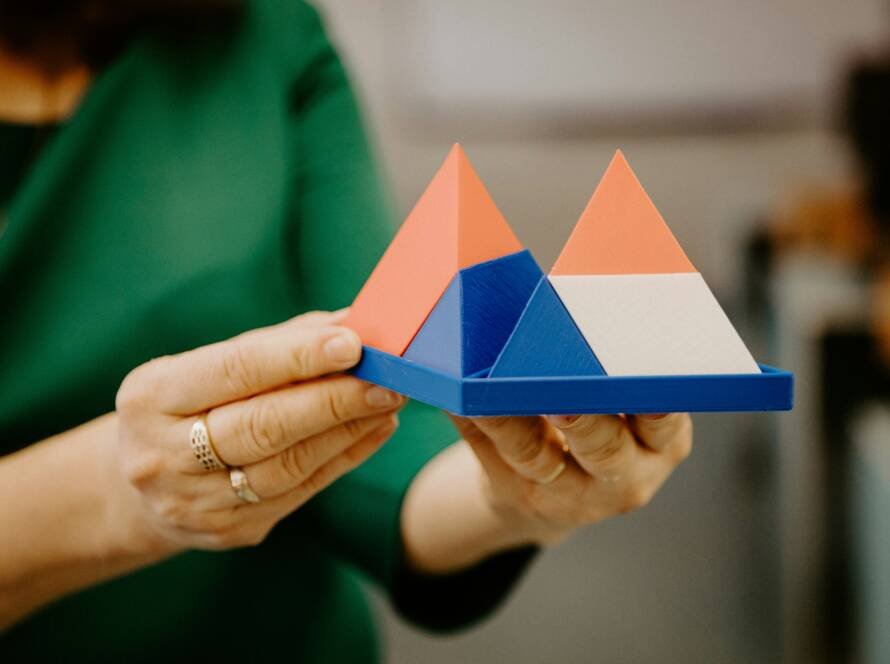Rekindling the Sacred Flame of Learning in Today’s Classrooms
In the quiet hum of modern classrooms filled with digital screens, textbooks, and timetables, a silent yearning lingers—among children, teachers, and parents alike. A yearning for something deeper, more rooted, more resonant. A thirst not just for information, but for wisdom. Not merely for instruction, but for insight. In an era where learning often feels mechanical and fragmented, the time has come to reimagine education—not as a delivery system of data, but as a sacred dialogue between the past and the future, between the learner and the universe.
This is the promise of integrating Indian Knowledge Systems (IKS) into our daily lesson plans. Not as an ornamental addition, not as a nostalgic throwback, but as a transformative foundation for experiential, values-driven, and contextually relevant education.
Today’s learners are not blank slates. They are seekers. They carry questions that demand meaning, relevance, and authenticity. The National Education Policy 2020 recognizes this truth. It speaks of “rootedness in India and pride in our rich heritage,” even as it champions global citizenship, 21st-century skills, and holistic development. But how does this grand vision translate into something tangible within the four walls of a classroom?
Let us walk this path together—step by step—not with the rigidity of a formula, but with the rhythm of a raga, the flow of a river, the stillness of a mantra.


Step 1: Begin with the ‘Why’ — Set the Intention
Before integrating IKS into lesson plans, ask: What is the deeper purpose of this learning experience?
Is it to cultivate ecological sensitivity through the lens of Vrikshayurveda? To explore mathematical logic through Pingala’s binary patterns? To teach ethics not through abstract rules, but through the lived wisdom of Panchatantra or the debates of the Upanishads?
When the why is rooted in purpose, the how flows naturally.
Step 2: Identify the Anchor Concepts in the Curriculum
Take the existing syllabus—whether it’s science, mathematics, history, language, or art—and highlight the key learning outcomes. Now, map these to themes, philosophies, and practices from Indian Knowledge Systems. For example:
-
Science: While teaching food chains or biodiversity, explore concepts from Charaka Samhita or Ayurveda, emphasizing balance and interdependence in nature.
-
Mathematics: Introduce the concept of zero and infinity through Brahmagupta, or delve into geometric patterns in temple architecture and mandalas.
-
Languages: Use Sanskrit shlokas or Tamil Sangam poetry as models of linguistic precision and cultural richness. Let students explore meaning, rhythm, and poetic devices.
-
History: Teach governance and civic ethics through the Arthashastra, not just as a political treatise but as a guide to leadership, justice, and public welfare.
-
Environmental Studies: Teach water conservation by exploring ancient stepwells, rainwater harvesting in Rajasthan, and the rituals of reverence for rivers.
The past is not distant. It is waiting—alive, vibrant, urgent—to be discovered in the present moment of learning.
Step 3: Design Activities That Invoke Participation, Not Passivity
IKS thrives not in passive memorization, but in anubhav—direct experience. Lesson plans should therefore prioritize activities that are inquiry-based, dialogical, and reflective.
-
Role-play a village panchayat sabha to teach civic processes.
-
Organize a maths-mela where students decode yantras and design kolams based on symmetry.
-
Facilitate debates inspired by Nyaya and Samkhya to encourage structured reasoning and philosophical inquiry.
-
Set up a garden inspired by Ayurvedic botany, where children observe, document, and care for medicinal plants.
Let learning become a lived experience—not just for the mind, but for the body and spirit.
Step 4: Embed Value Education through Storytelling and Reflection
Indian knowledge is not merely technical; it is deeply ethical. Lessons drawn from epics, folk traditions, and biographies of sages and scientists offer a mirror to one’s own choices, dilemmas, and dharma.
Each story—from Nachiketa’s courage to Gargi’s wisdom, from Buddha’s compassion to Kabir’s fearless questioning—becomes a portal to self-reflection.
Use reflective journaling, classroom circles, and peer conversations to allow these insights to settle into the heart. This is not moral preaching—it is cultivating viveka (discernment) and shraddha (reverence).
Step 5: Localize the Learning
Indian Knowledge Systems are not a monolith. They are as diverse as the land they spring from. From the weaving wisdom of Kanchipuram to the metallurgy of Bastar, from the oral mathematics of Kerala traders to the astronomical insights of Ujjain—every region holds treasures.
Engage with local artisans, grandparents, farmers, or traditional healers. Invite them into the classroom. Organize learning journeys into craft clusters, heritage sites, and forests. Let students document these interactions, build projects, and find pride in the wisdom embedded in their soil.
This integration is not about pasting tradition onto modernity—it is about dissolving the artificial wall between them.
Step 6: Assess Differently, With Depth and Meaning
When learning is experiential and interdisciplinary, assessment too must evolve. Move beyond rote recall to tools that evaluate thinking, doing, feeling, and being.
-
Use rubrics to assess collaboration in a group project on ancient architecture.
-
Design portfolios where students track their learning of indigenous ecological practices.
-
Include self and peer assessments that capture shifts in mindset, empathy, or ethical reasoning.
Evaluation, like education, must honour the whole child.
The Deeper Pulse: Why This Matters Now
Indian Knowledge Systems evolved not in isolation, but in civilizational contexts that valued harmony—with nature, community, and the self. They were never rigid—they were resilient, evolving, plural, and interdisciplinary long before the term was invented.
To bring IKS into the classroom is to dissolve the artificial divide between ancient and modern, head and heart, global and local. It is to say to every learner:
“You are not disconnected. You belong to a lineage of thinkers, poets, healers, scientists, and seekers. You are not a consumer of education. You are a co-creator of knowledge.”
This is an educational imperative—especially in a nation where we are striving to balance 21st-century aspirations with timeless civilizational depth.
A Final Word for the Educators
We are not just a transmitter of facts. We are a weaver—of insight, identity, and inner awakening. To integrate IKS is to reclaim the sacred in our profession. To create classrooms where learning is not a race, but a return—to meaning, to belonging, to wholeness.
Let every lesson become a lamp.
Let every child become a flame.
Let us teach in a way that uplifts not just minds, but humanity itself.
The future of education lies not in importing the next big idea, but in remembering the timeless ones already within us.
Let our classrooms echo not just with answers, but with awakenings.
Let the chalkboards become mirrors to deeper truths.
Let teachers become not mere instructors, but torchbearers of a timeless journey.
Let learning, once again, become sacred.
The path lies before us. It begins with a single lesson—infused with meaning, rooted in our soul, and open to the world.
Are we ready to walk it?
May our lesson plans not just inform minds, but transform lives.



